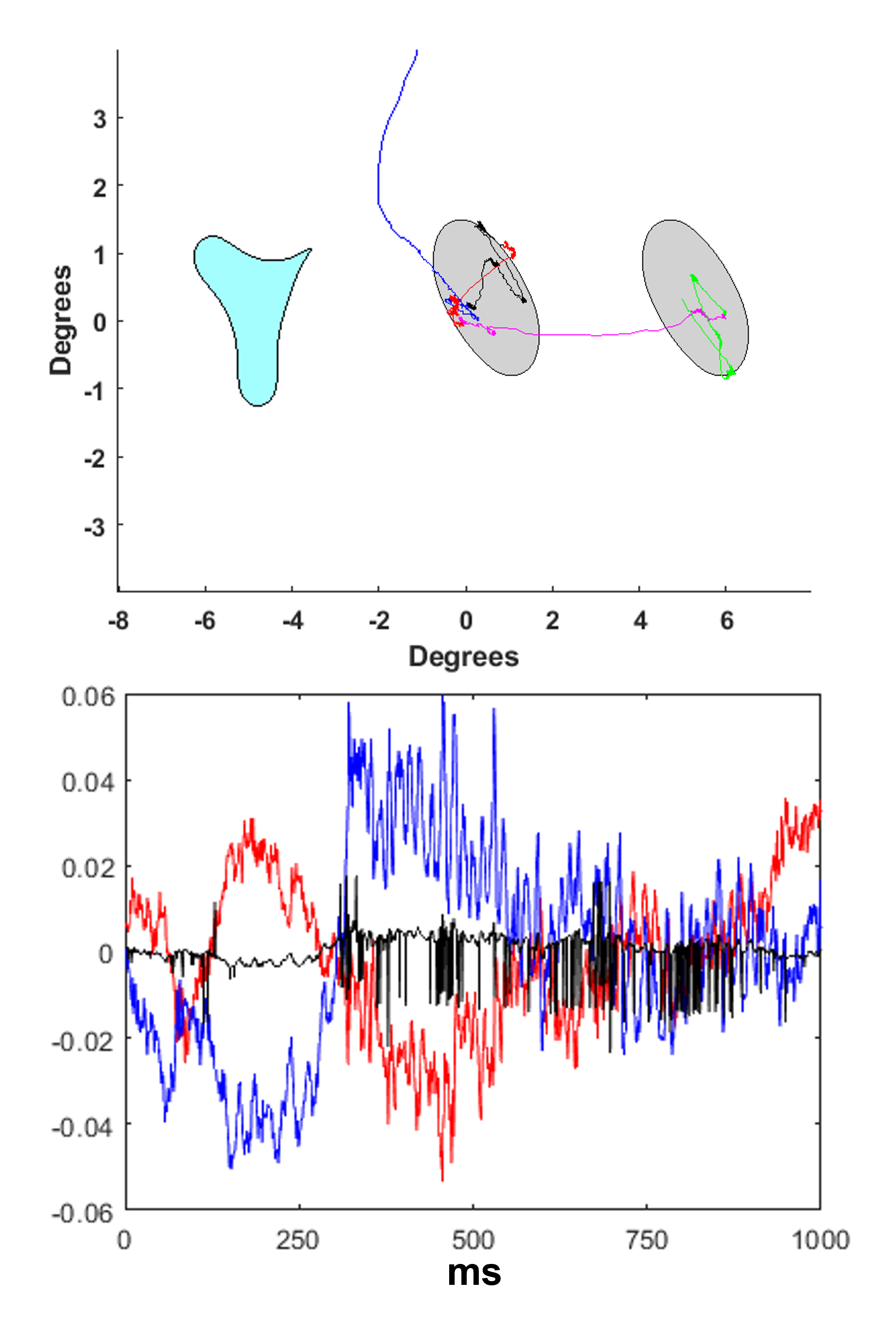
Research
We are working in two areas of neuroscience. In one area, we study the role eye movements in our ability to understand what we are looking at. Our eyes are constantly in motion. This motion generates patterns of neural activity in the retina, even when we look closely at something for a prolonged period. How the visual cortex uses this activity to understand a visual scene and the relationships between the objects and actions in the scene is an important question for both understanding human vision and building artificial neural networks that can see. We hypothesize that the dynamics of visual cortical networks exploit the dynamics of the activity created by different types of eye movements to tell us about different types of visual features in a scene. We are also studying how the visual cortex may utilize eye movements to form and gate communication channels across cortical areas. The visual cortex is organized hierarchically (with extensive but diffuse feedback) and the patterns of neural activity across this hierarchy are governed by cellular and local and long-range circuit dynamics. Eye movements may modulate these dynamics to generate and access communication channels across the hierarchy, and the timing of eye movements may be essential to how visual information is collected and integrated into other concurrent processing streams in the brain, including learning and memory recall. We record neural activity from multiple stages in the visual cortex and record eye movements with high resolution while our animal subjects carry out a variety of visual cognitive tasks. Our analyses of these data focus on how eye movements influence the timing and the causal structure of the interactions between stages of processing in the cortex.
The other area of neuroscience we work in, in collaboration with the laboratory of Dr. Jonathan Baker of the BMRI at WCM, is using deep brain stimulation (DBS) to modulate behavior and regional and global brain activity. We target DBS to the central lateral thalamic nucleus because this region receives extensive inputs from brainstem arousal centers and facilitates local cortical computations and cortico-cortical communication. This work naturally leads to solutions for improving DBS as a therapeutic tool for treating neuropsychiatric disorders, including those produced by traumatic brain injury.
Figure 1

Current Projects:
- Eye movements and cortical visual processing
- Thalamic deep brain stimulation
Bio
Purpura attended the Mannes College of Music, New York University, and Columbia College as an undergraduate and obtained his Ph.D. at Rockefeller University in 1988 under the mentorships of Drs. Robert Shapley and Ehud Kaplan. Purpura did his post-doctoral work with Dr. Jonathan Victor at Cornell University Medical College (CUMC) following which Purpura, while an instructor at Cornell, was a visiting scientist at the NEI at the NIH, 1991-1993. Purpura became Assistant Professor in Neurology and Neuroscience and the Graduate Program of Neuroscience at CUMC in 1993; Associate Professor in both in WCMC in 2000; BMRI since 2013.
Distinctions:
- Searle Award (Post-doctoral support)
- Charles H. Revson Foundation (Post-doctoral support)
- McDonnel-Pew Research Program in Cognitive Neuroscience Award
- Visiting Scientist, Laboratory of Sensorimotor Research, National Eye Institute, NIH: 1991-1993
- NIH NINDS-K04 Career Development Award
- 17 summers of research and/or teaching at the Marine Biological Laboratory, Woods Hole, Mass.
- Established alert primate physiology laboratory at Weill Cornell
- First served on the admissions committee for the Graduate Program in Neuroscience at Cornell University Medical College in 1994
